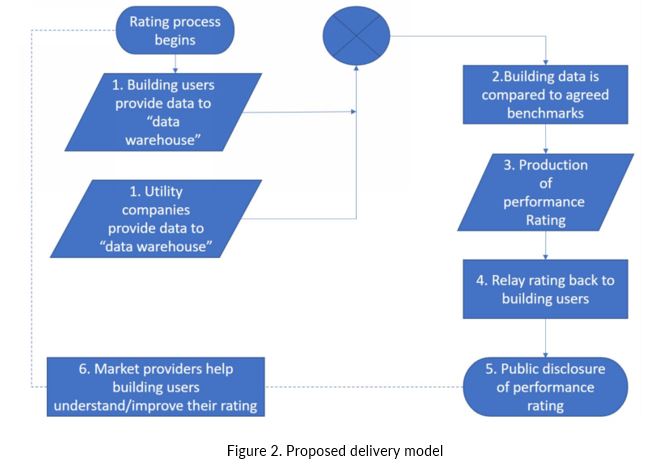Insights
Ringing the changes: a performance-based policy framework.
Assessing measured energy use and emissions in big commercial builds.
The next part of our series on the changing regulations on the pathway to net zero carbon focuses on the scoring system proposed by the government’s new performance-based policy framework.
Evidence shows that there is almost no correlation between a building’s EPC score and its actual energy and carbon performance. This is particularly true for large and complex buildings.
In England and Wales, only 7% of commercial and industrial buildings are larger than 1,000m2 – however, they use over 53% of all the energy produced by this category of building.
The performance-based policy framework will assess measured energy use and associated carbon emissions in commercial and industrial buildings larger than 1,000m2 in England and Wales.
A consultation by the government’s Department for Business, Energy and Industrial Strategy (BEIS), which outlined the proposals, has now ended. Final details and timelines for the framework are expected shortly.
Reaching for the stars.
The government has looked to international best practice and based proposals on the successful National Australian Built Environment Rating Scheme (NABERS). The NABERS scheme provides an evidential assessment of building energy performance based on 12 months of measured energy data, to award buildings a star rating.
The performance-based policy framework proposes a scoring system, awarding one (worst) to six (best) stars. Buildings will receive a higher score if they reduce their energy and carbon emissions.
Rating types:
- Whole building rating (owner occupier or single-tenant buildings)
- Base building rating (for owners of multi-tenanted buildings)
- Tenant rating (voluntary for tenants of multi-tenanted buildings)

Scheme requirements.
Initial onboarding (start 2022, date TBC).
Buildings must undergo a physical site visit and assessment by a qualified person.
- Gather relevant site information
– Floor space data
– Operational hours
– Building use
– On-site renewables
– Whether building needs base or whole building rating - Ensure the energy meters are set up correctly.
First year (by 2023, 12 months after onboarding)
Following the onboarding process, 12 months’ energy data must be gathered, and the rating must be assessed and disclosed.
Annual submissions.
Annually, metered energy data and other relevant information (changes to operational hours, occupation or floor area etc) must be submitted to the ratings administrator.
The information for the annual submission can be gathered via a desktop exercise and it is not proposed that an annual site visit will be required.
Every four years, or following fundamental change.
A physical site visit will be required every four years to ensure the original input data is in line with the current site usage.
Additionally, a site visit will be required if there has been a fundamental change to the building such as a change of use, significant floor area change etc.
Public disclosure.
The rating must be disclosed publicly, both in the building and online.
The building owner or single-tenant business will need to publish:
- The name of the organisation
- The up-to-date performance-based framework rating for the building
- The location of the building

Enforcement.
Similar to the Minimum Energy Efficiency Standards (MEES), it is proposed that landlords can be fined up to £150,000 where they are found to have breached the regulations.
For more information, contact David O’ Sullivan.